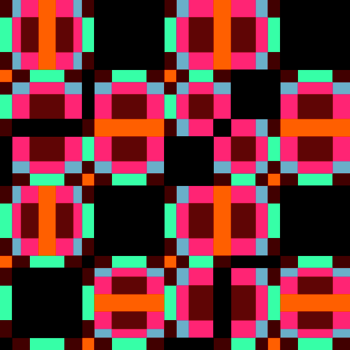Sypmlectic and Contact Geometry
In symplectic geometry the shape of an object is determined by fixing a way to measure the signed area of 2-dimensional surfaces (+technical conditions). Two manifolds are symplectomorphic if there is a diffeomorphism which leaves these areas invariant. This type of geometry was discovered long ago; it naturally appears whenever a metric and an almost complex structure naturally interact. This is the case in phase spaces, in which symplectic structures yield a natural framework for Hamiltonian dynamics.
Local: A first exploration of the geometric wealth of symplectic structures is rather sobering: Locally, all symplectic manifolds are the same by a theorem of Darboux. Then, how is this theory interesting?
Global: Gromov discovered the phenomenon of `non-squeezing': A ball B2n(r) symplectically cannot embed into a cylinder B2 x ℝ2n-2(R) if r>R. So there must be global obstructions for embeddings (and volume is clearly not a candidate). The discovery of this phenomenon was late (1985) and the proof is difficult; it involves in an essential way the machinery of pseudo-holomorphic curves.

Some things symplectic geometers do:
- The behavior of pseudo-holomorphic curves yields information about both the shape of symplectic spaces and their Hamiltonian dynamics. So using the curves as middle man, this lets us draw conclusions about dynamical questions given shape, and about shape given dynamical information.
- One specific approach is the idea of Floer to construct homologies whose chains are Hamiltonian orbits and whose differential is determined by pseudo-holomorphic curves. The resulting homology is a symplectic invariant. Many different versions of Floer homology were constructed and more are in development.
- To overcome technical difficulties, a lot of fundamental theory was (and still is) developeded. This is both on the side of analysis (e.g., polyfold theory) and on the algebra side (e.g., Fukaya category).
- Phase spaces are naturally symplectic, so we can use the above machinery to study celestial mechanics, magnetic dynamical systems, billiard dynamics, etc. The modern perspective on these classical subjects provides many new insights about, e.g., minimal length of orbits or chaos theory.
- We are perpetually searching other symplectic structures where they have not yet been perceived. For example in game theory or character varieties.

